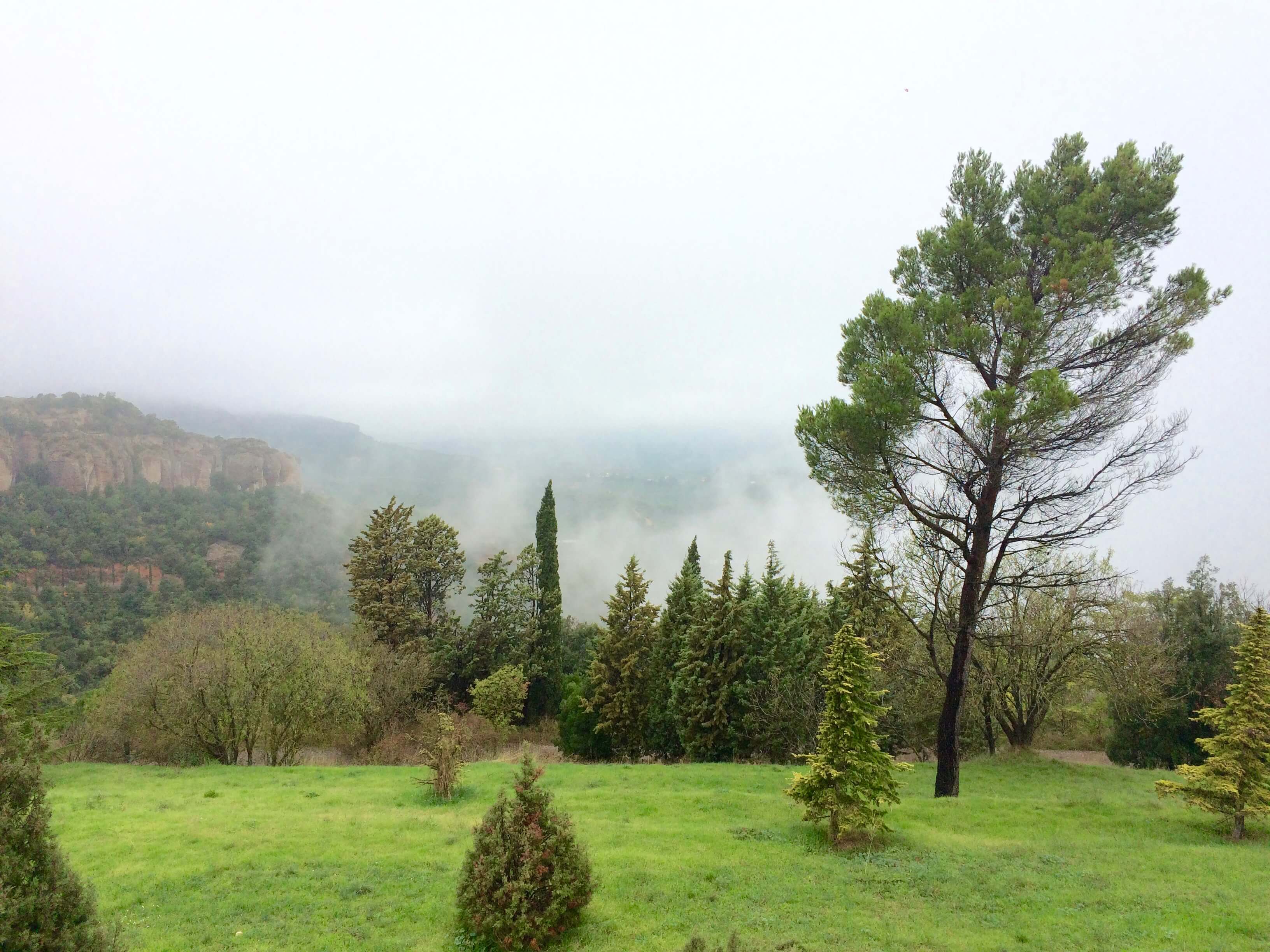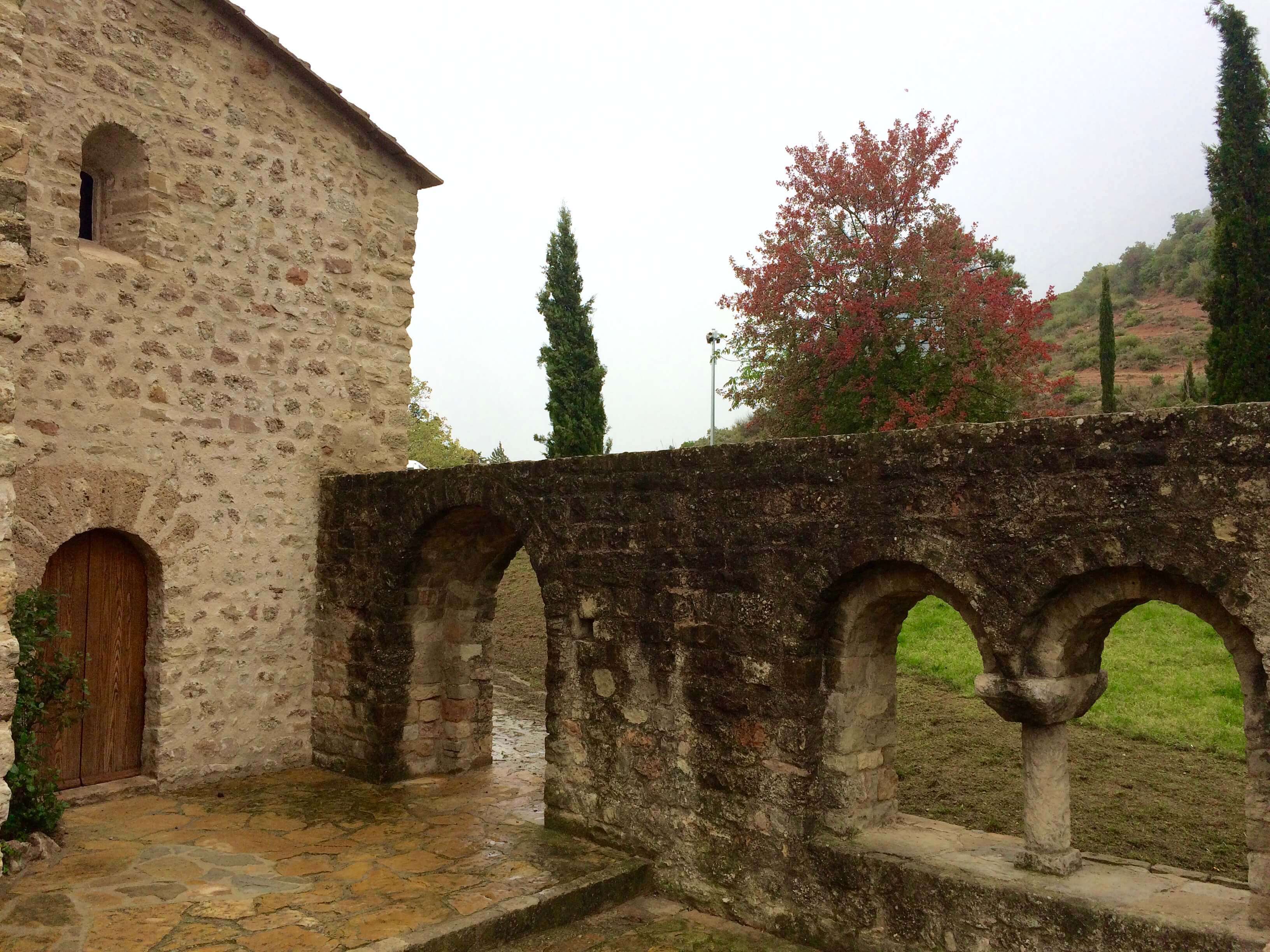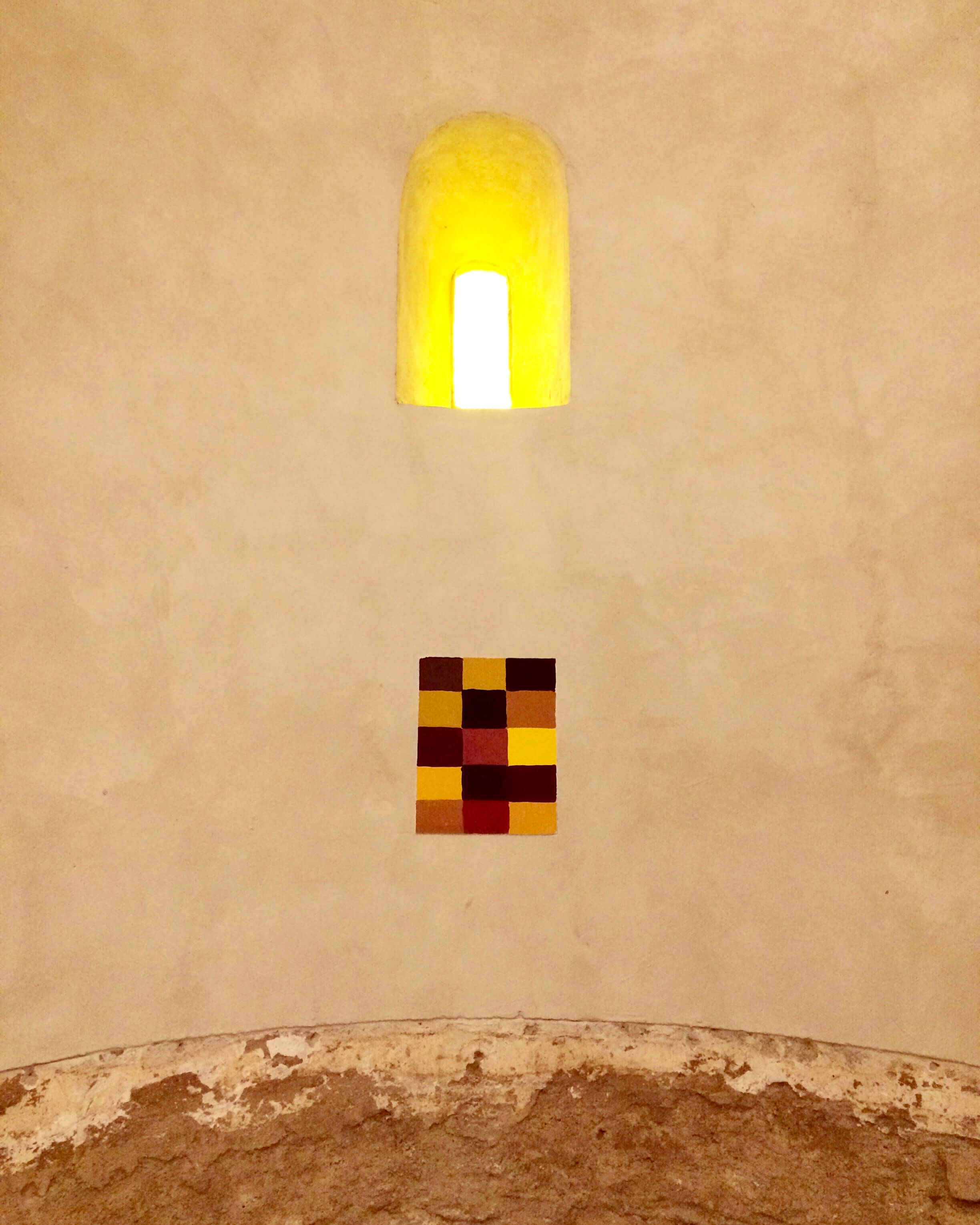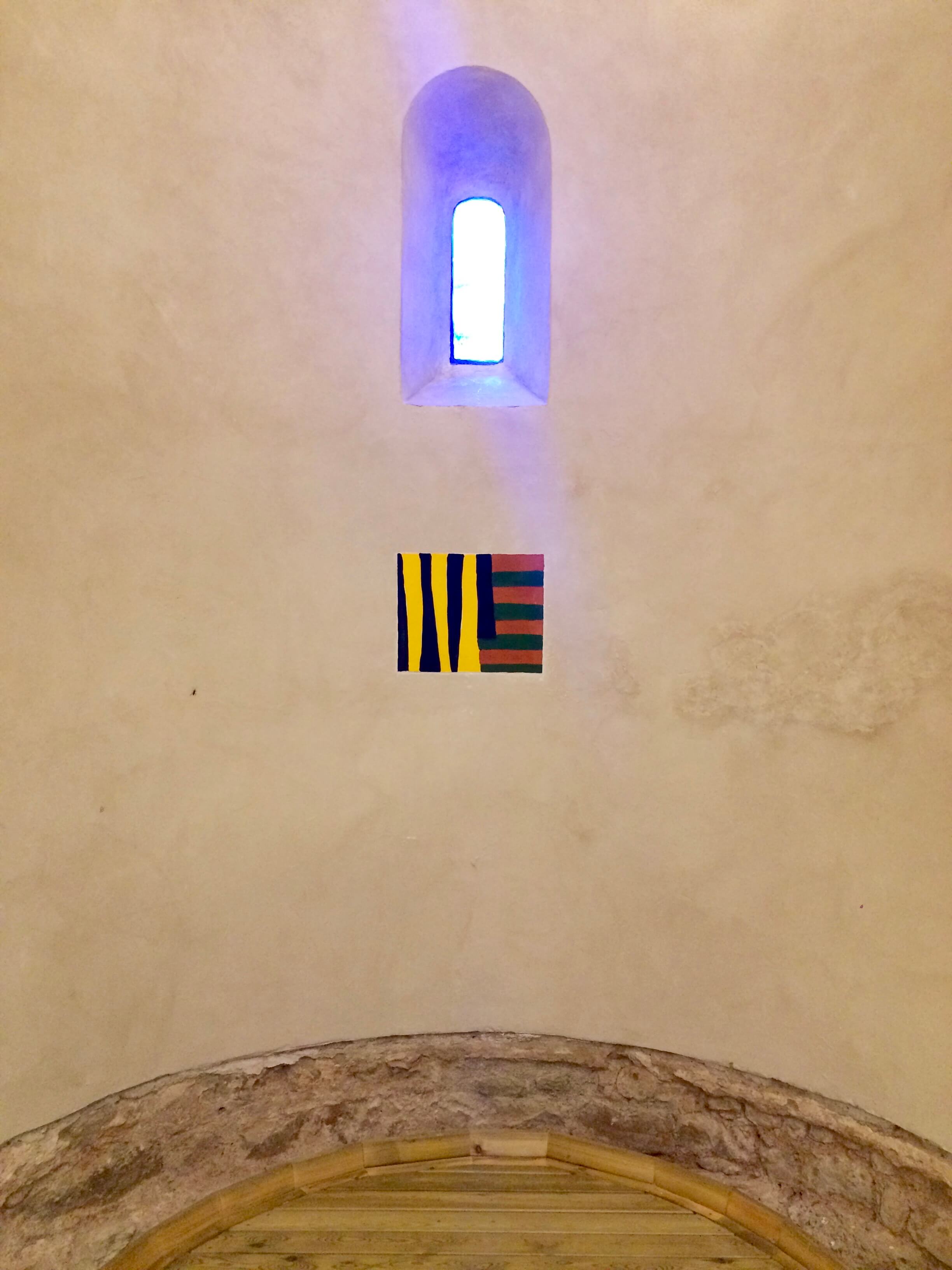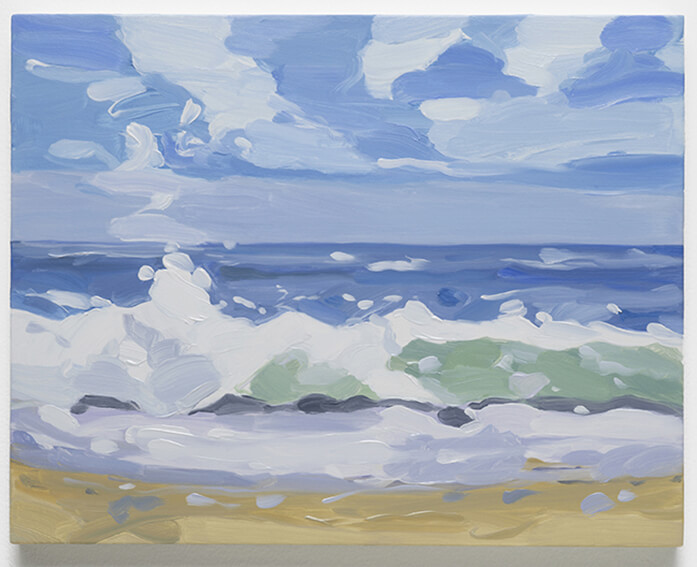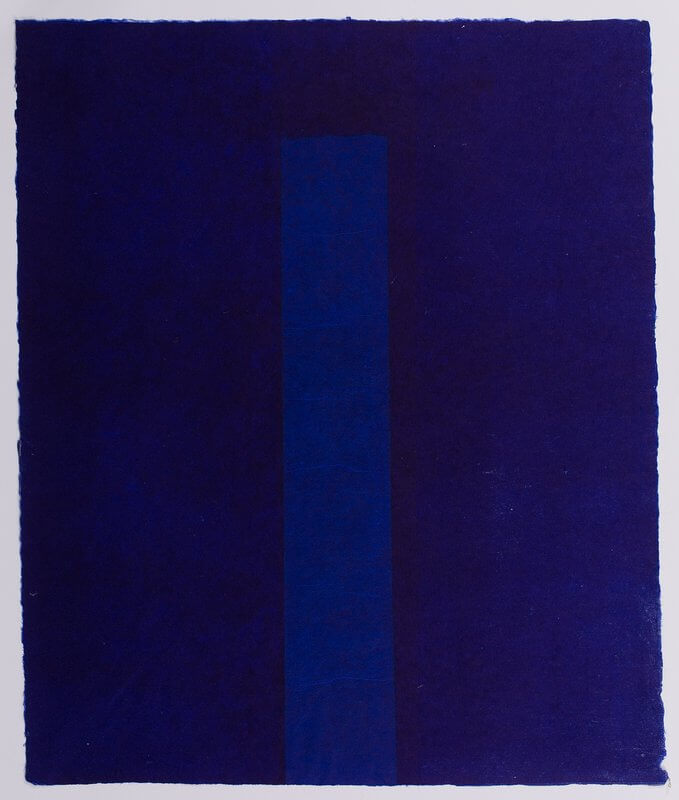I visited Barcelona last weekend. The reason was a true contemporary art pilgrimage to a chapel perched on top of the Montserrat mountains, one hour away from the city. Sean Scully (b. 1945) unveiled his permanent installation in Santa Cecilia church in June 2015. Scully has taken over the small Romanic chapel and conflated art and spirituality with his symbolic use of colours and the simplicity of his brushstroke.
The one thousand-year-old church had been under restoration for 10 years. Scully has had a studio in Barcelona since 1994 and is familiar with the surrounding countryside. Santa Cecilia project started shortly after the artist met with the Director of the Museum of Montserrat in 2005. Stemming from a personal connection with the place, Scully follows the steps of Matisse in Vence and Rothko in Houston, with their landmark art interventions in a religious site.

The architecture is austere but the building proportions and its pink stone make it soft and welcoming. The Irish-American painter is committed to the fundamentals of abstract art. He combines dark and somber paintings with small colourful frescos which he has executed directly onto the wall with traditional techniques, letting the stone soak the pigments. The frescos add joyful moments of discovery in discreet corners. There are also eight small stained-glass windows that filter the light with monochrome primary colours.
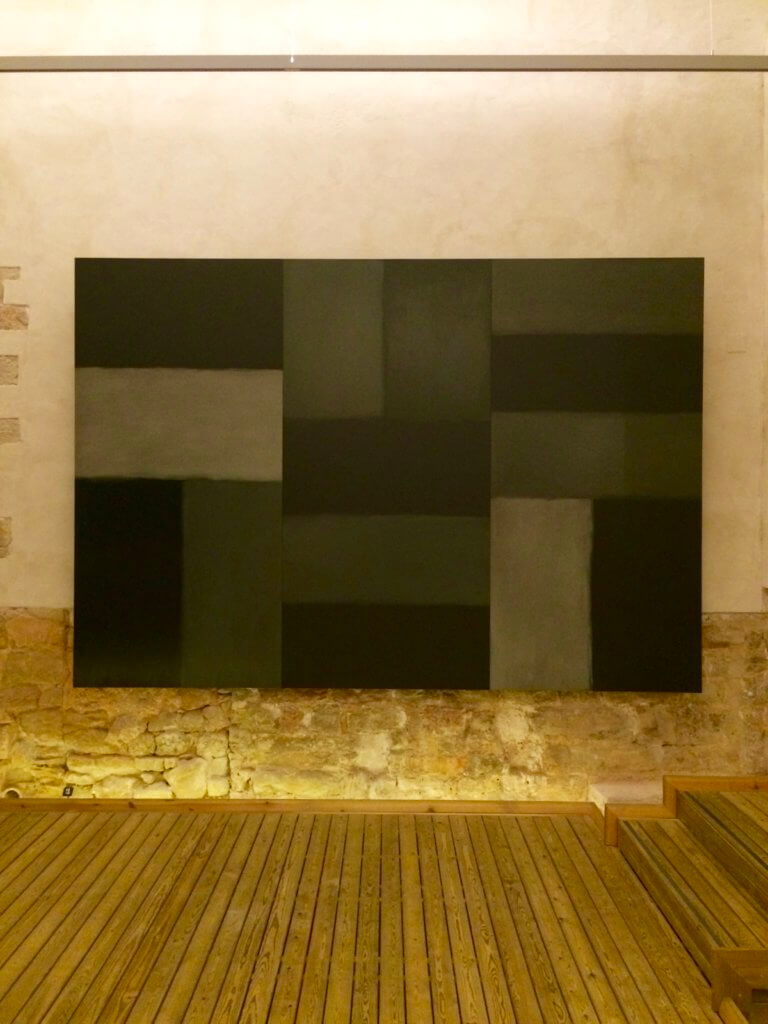

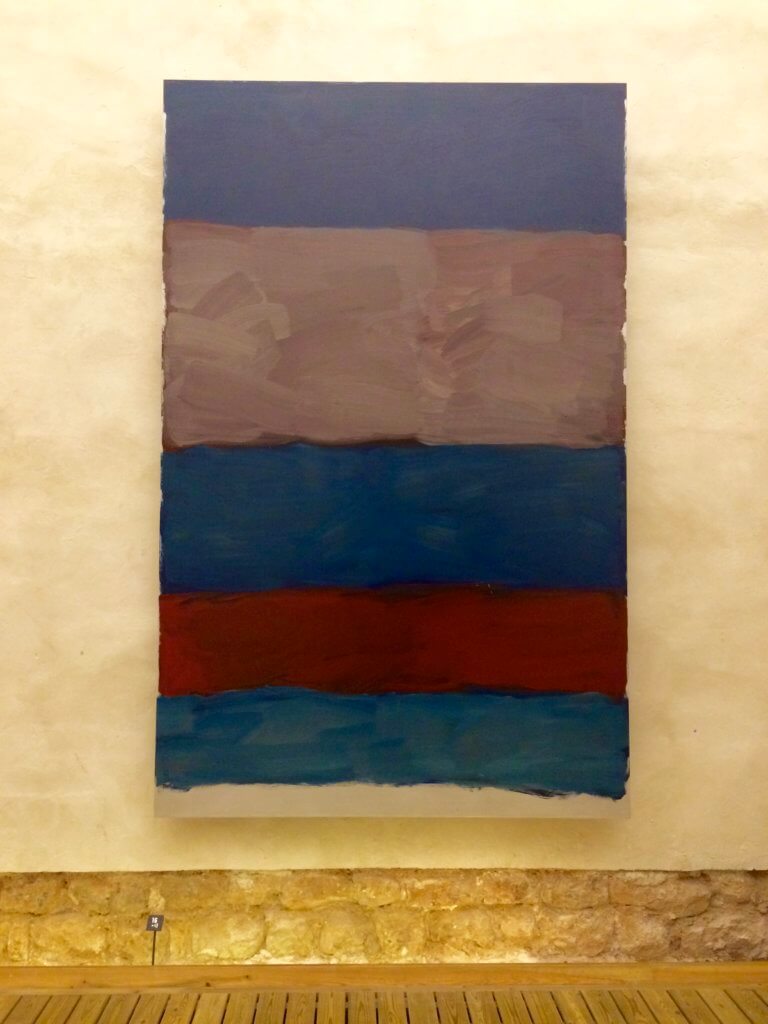
There is an air of Malevich-like Russian constructivism with great detail for symbolic colour compositions and a minimalist abstract geometry. As a centerpiece, the altar supports a cross of stacked glass blocks in a deep ocean blue and a pair of wrought-iron candlesticks, all designed by Scully. A curved panel of coloured-glass sheets hangs behind the altar in glossy blue and yellow hues adding a depth of materials and light reflections that reminisce the Mediterranean light and the sea.
The cross is the only Christian symbol present in the church. The artist has conferred the space a spiritual, but no religious, quality. A subtle play on musicality adds to the flow of your experience in the chapel, not least because Cecilia is the patron saint of music. As you enter there is a gentle progression from heavy melancholy in a grey and black colour-block tryptic to bursts of joy through the shimmering light reflections in the windows, the altarpiece and the small frescos. In between the somber and the joyful moments, Scully has positioned works that contribute calm and serenity. One of my favourites is the trio of blue panels. After an art pilgrimage day, I drive back to Barcelona and it seems that Scully has got it just right…
A solo exhibition by Sean Scully opens at Timothy Taylor on November 2nd until December 17th 2016, London.
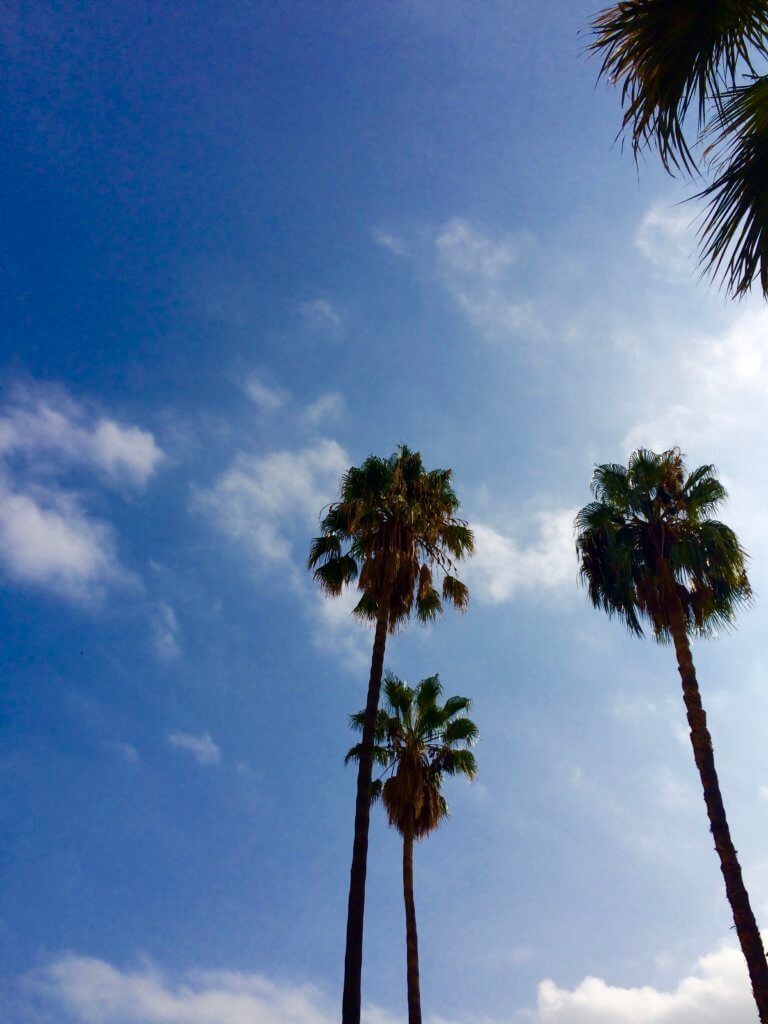
All images © Marina Ribera Iñigo


